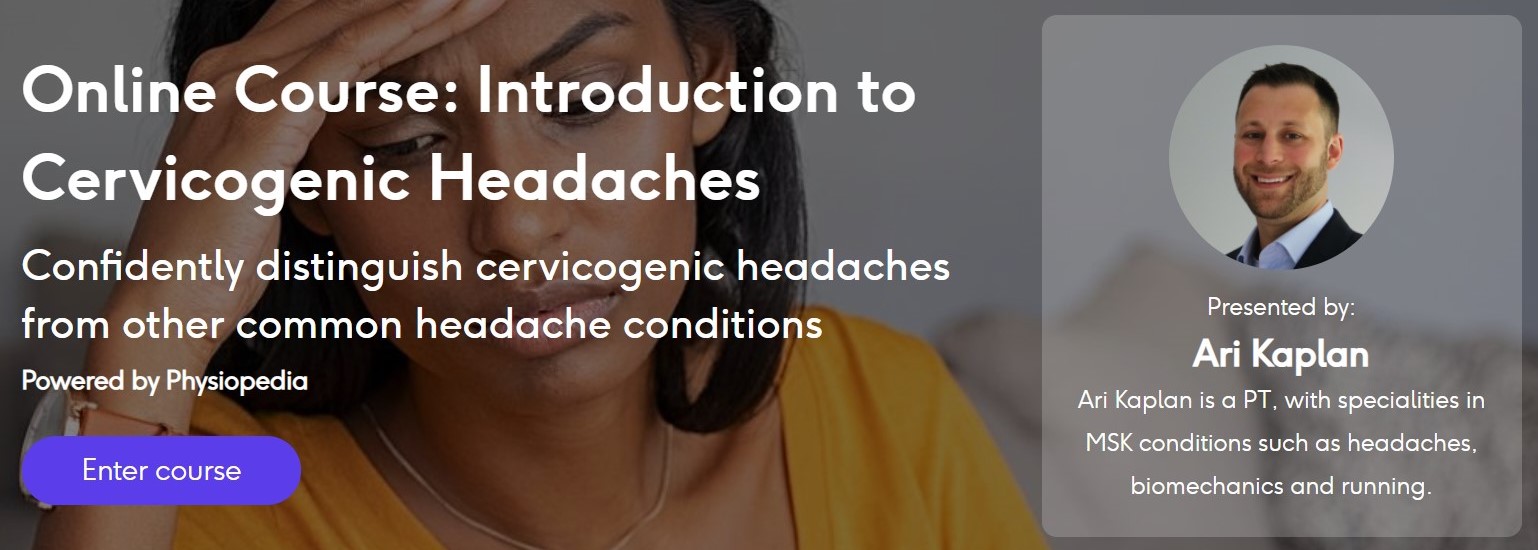Tension-type headache is one of the forms of headache you will see in clinical practice and is the most prevalent primary type of headache.
Symptoms include oppressive holocranial pain which can become chronic if not managed in a timely manner. Treatments include manual therapy however it’s not clear how effective it is or what techniques are best to use.
Do You Know The Difference Between Headache Types?
The aim of a new systematic review published in Neurologia aims to assess the effectiveness of non-invasive manual therapy in the treatment of patients with tension-type headache.
Methods
This systematic review was not pre-registered on PROSPERO however did adhere to PRISMA guidance and use the guidance to assess the quality of the articles included within the review.
To be included articles had to be RCTs which included participants aged 18 – 65 years old and diagnosed with tension-type headache according to the International Headache Criteria. Articles were excluded if:
- TTH was associated with some mechanical disorder such as neck or shoulder pain
- Patients with other types of headache were included
- The study assessed invasive physiotherapy techniques and medications
The full search strategy is not available in full however it took place from September to November 2016 and included articles published between 2000 and 2016. It’s unclear why these dates were chosen but likely to do with the criteria for diagnosing TTH being created around that time.
The journals Brain, PubMed, web of Science, PEDro, Scopus, CINAHL and Science Direct were searched using this string.
‘‘tension-type headache’’; ‘‘manual therapy’’; and ‘‘tension-type headache’’ AND ‘‘manual therapy.’’
Methodological quality of study was assessed using CASP guidance for trials and the Oxford scale for the level of evidence and degree of recommendations. It is unclear who performed the appraisal or what process took place.
Results
In total ten articles were included within the final review and there was a lot of variety in techniques used to treat TTH. Five studies compared sub occipital soft tissue inhibition with manual therapy of the c-spine, and combination of the two techniques and then a control group totalling 240 participants. All five articles covered 4 sessions which were 20 minutes in duration.
All other intervention combinations and variety were only included in single studies and largely compared two intervention with a control and a combination of the two interventions against single and control groups.
The other interventions were as follows:
- superficial massage and soft tissue techniques
- Cyriax and Maitland mobilisations
- Simple resistance exercise and postural retraining
- Dorsal and lumbar-pelvic posture retraining
Across all of the intervention duration ranged between 4-6 weeks and session duration ranged between 10-30 minutes with the most common being 20 minutes. The most common outcome measure used was pain intensity and frequency of pain.
In each study physiotherapy had a positive effect on all outcome measures but most notably on range of movement and pain intensity and when combinations of manual therapy was used. There doesn’t appear to be one type of manual therapy which is more effective than the others used within this review. But as general rule the combination of soft tissue and structural techniques appears likely to be most effective.
There are caveats when applying this evidence clinically as the quality of the studies included within this review are of average quality and most don’t report attrition rates and have small sample sizes. Additionally only one study reports confidence intervals to determine the precision of effects of the interventions. Two trials also did not describe the the groups of participants clearly.
